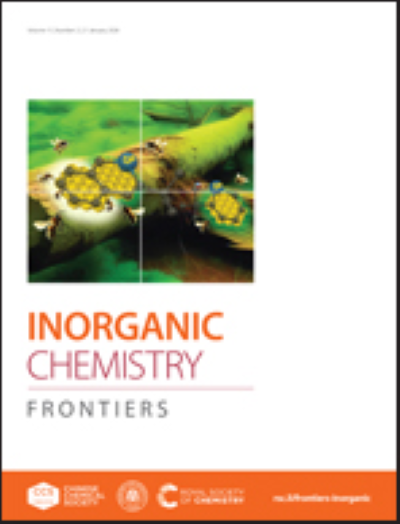磷酸钝化层诱导的牺牲模板效应构建S/ p修饰的OER性能增强的自持型NiFe催化剂
IF 6.1
1区 化学
Q1 CHEMISTRY, INORGANIC & NUCLEAR
引用次数: 0
摘要
硫(S)和磷(P)共掺杂到主流的NiFe催化剂中,可以电子调节Ni(或Fe)位点,从而比单一修饰更显著地增强碱性析氧反应(OER)。然而,通过工业兼容的合成路线实现这一目标仍然极具挑战性。通过简单的一步二元熔盐启发,可以很容易地实现基于磷酸钝化层的有利牺牲模板效应,从而构建具有优异OER性能的S/P共装饰自支撑NiFe催化剂。在商品nfe泡沫(NFF)表面优选预成型磷酸钝化层,可以有效防止其被硫盐过度腐蚀,同时促进S掺杂。这个有趣的过程最终产生了一个具有oer导电特性的集成电极,如可调谐的价态、丰富的氧空位、充足的晶体-非晶态边界、丰富的孔隙和强的材料-衬底结合。该电极在电流密度为10 mA cm-2时可提供157.6 mV的超低OER过电位和1400 h的超长稳定性,可保持1 a cm-2的工业级电流,优于目前的同类产品。同位素、TMA+探针和ph相关测量结果进一步表明,S/P共掺杂深刻改变了质子交换性能,从而改变了OER机制和活性。这种由磷酸钝化层诱导的牺牲模板效应可以扩展到开发其他无粘结剂的过渡金属化合物,用于更广泛的电催化领域。本文章由计算机程序翻译,如有差异,请以英文原文为准。
Phosphoric Acid Passivation Layer-Induced Sacrificial Template Effect for Constructing S/P-modified self-supported NiFe Catalysts with Enhanced OER Performance
The co-doping of sulfur (S) and phosphorus (P) into the mainstream NiFe catalysts can electronically modulate the Ni (or Fe) sites, thus kinetically augmenting the alkaline oxygen evolution reaction (OER) more prominently than unitary modifications. However, achieving this objective via an industrial-compatible synthetic route remains extremely challenging. Herein, an advantageous sacrificial template effect based on the phosphoric acid passivation layer can be easily realized, via a concise one-step binary molten salt inspiration, enabling the construction of the S/P co-decorated self-supported NiFe catalysts for superior OER performance. The prioritized pre-formed phosphoric acid passivation layer on the surface of commercial NiFe foam (NFF) can effectively prevent its over-corrosion by the sulphur salt and simultaneously promote the S doping. This interesting process ultimately produced an integrated electrode with OER-conductive features, such as the tuned valence state, enriched oxygen vacancies, ample crystalline-amorphous boundaries, copious pores, and strong material-substrate binding. The as-synthesized electrode can deliver the ultra-low OER overpotential of 157.6 mV at a current density of 10 mA cm-2 and ultralong stability of 1400 h to maintain an industrial-level current of 1 A cm-2, outperforming the recent peers. Results of isotope, TMA+ probe and pH-dependent measurements further demonstrate that S/P co-doping profoundly alters proton exchange performance, thereby altering the OER mechanism and activity. This sacrificial template effect induced by phosphoric acid passivation layer may be extended to develop other binder-free transition metal compounds for broader electrocatalytic fields.
求助全文
通过发布文献求助,成功后即可免费获取论文全文。
去求助
来源期刊

Inorganic Chemistry Frontiers
CHEMISTRY, INORGANIC & NUCLEAR-
CiteScore
10.40
自引率
7.10%
发文量
587
审稿时长
1.2 months
期刊介绍:
The international, high quality journal for interdisciplinary research between inorganic chemistry and related subjects
 求助内容:
求助内容: 应助结果提醒方式:
应助结果提醒方式:


